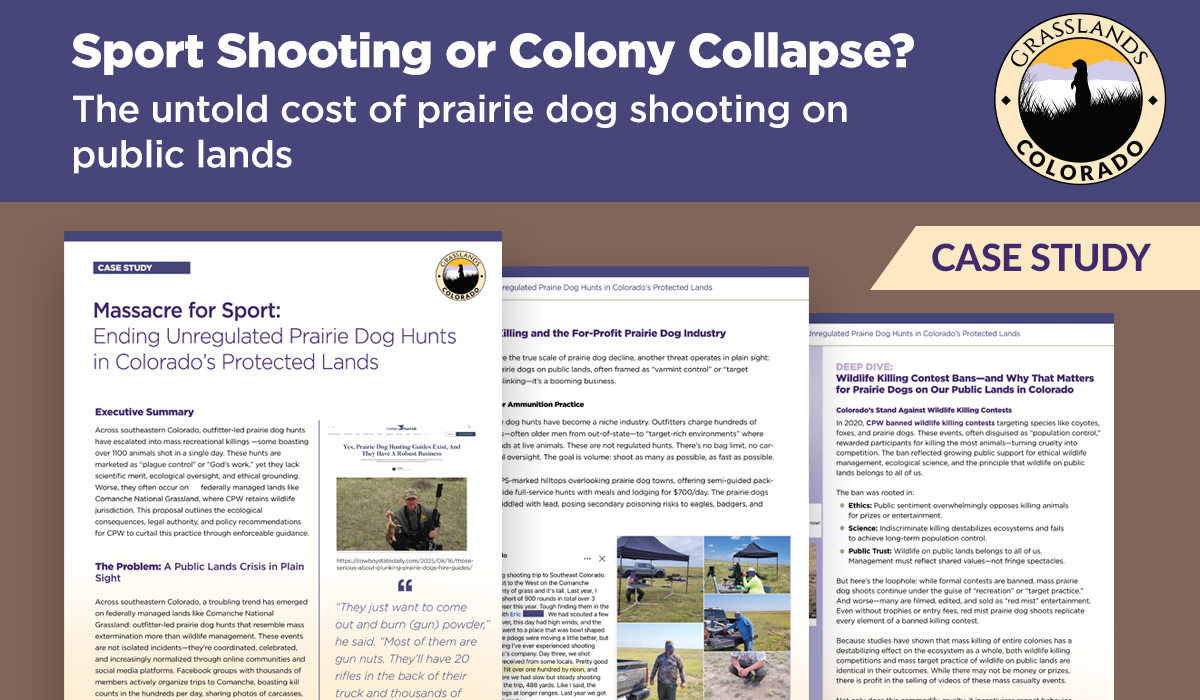
TLDR;
Massacre for Sport: Why Colorado Must Regulate
Prairie Dog Hunting on Public Lands
In southeastern Colorado, social media posts from outfitters and prairie dog hunting groups have fueled a disturbing rise in mass recreational killings—some boasting over 1,100 animals shot in a single day. These events, often disguised as “plague control” or “target practice,” are unregulated, ecologically destructive, and increasingly normalized online. Many take place on public lands, including state and federally managed areas like Comanche National Grassland, where Colorado Parks and Wildlife (CPW) holds jurisdiction under Title 33 alongside federal oversight.
This case study delves into the mindset behind these actions and the lasting damage they inflict on our landscapes and ecosystems.
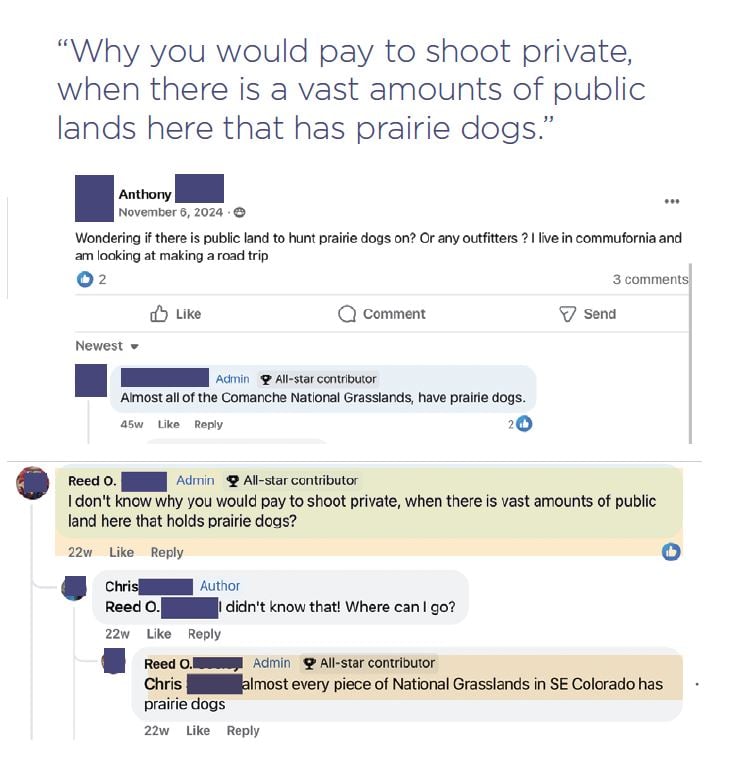
Prairie Dogs: Keystone Engineers of the Plains
Prairie dogs are not pests—they’re ecological architects. Their colonies support biodiversity, improve soil health, and serve as a foundation for entire grassland ecosystems.
- Over 120 species rely on prairie dog colonies for food, shelter, or hunting grounds.
- Burrowing owls, swift foxes, and black-footed ferrets are directly tied to prairie dog survival.
- Prairie dogs aerate soil, increase plant diversity, and help maintain healthy rangelands.
- Comanche National Grassland is one of the last intact prairie dog strongholds in Colorado.
- Less than 2% of historic prairie dog habitat remains across the West—making every surviving colony ecologically precious.
The Myth of “Healthy Populations”
CPW’s population estimates are misleading, often based on aerial surveys that dramatically overstate colony health. This false sense of abundance fuels complacency and justifies continued recreational shooting.
- Aerial surveys can overestimate prairie dog numbers by up to 60%, especially in plague-affected zones.
- Because CPW counts prairie dogs as stable due to this aerial survey, no protections are in place to regulate shooters.
- In 2000, the U.S. Fish and Wildlife Service designated black-tailed prairie dogs as a candidate for listing under the Endangered Species Act due to dramatic population declines. Despite this recognition, no federal protections were enacted, and state-level regulations remained minimal or nonexistent. Since then, habitat loss, plague, and recreational shooting have continued unchecked—leaving prairie dog populations even lower today than they were in 2000.
“Red Mist” Shooting Sprees
Hunters brag online about creating a “red mist”—a term used to describe prairie dogs exploding on impact. This isn’t just grotesque; it’s glorified in videos, forums, and outfitter marketing materials.
- Shooters compete for body counts, sometimes exceeding 1,000 kills in a single day.
- Some use high-powered rifles with scopes to target prairie dogs at long distances purely for entertainment.
- Videos are edited with slow-motion effects and shared as “highlight reels” of destruction.
Leaving Carcasses to Rot
After mass shootings, prairie dog carcasses are often left strewn across the landscape, attracting scavengers and spreading lead contamination.
- No retrieval, no cleanup—just hundreds of decomposing bodies on public land.
- This violates basic principles of ethical hunting and wildlife stewardship.
Lead Poisoning and Ecological Fallout
Lead ammunition used in prairie dog hunts leaves behind toxic carcasses that poison scavengers and predators. The ripple effects extend far beyond the colonies themselves.
- A single prairie dog carcass can contain enough lead to harm or kill multiple animals.
- Eagles, foxes, badgers, and other scavengers are at risk from ingesting contaminated remains.
- Voluntary lead reduction programs have failed—regulation is the only path forward.
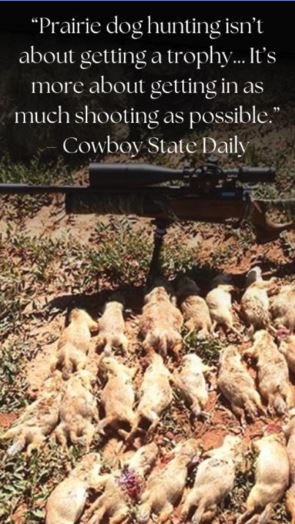
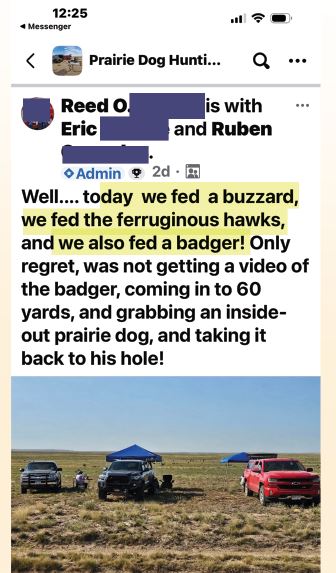
Targeting Resilience: The Assault on Surviving Colonies
Hunters are drawn to the largest, healthiest colonies—those most likely to survive plague and climate stress. These resilient populations are critical to species recovery, yet they’re being systematically wiped out.
- These colonies may hold adaptive traits essential for long-term survival.
- Their destruction undermines conservation science and erases decades of natural selection.
- CPW’s lack of regulation enables this ecological sabotage on public lands.
The Solution: CPW Must Act
Grasslands Colorado calls on CPW to take immediate action to protect prairie dogs and the ecosystems they support.
- Ban lead ammunition on public lands for prairie dog shooting.
- Recognize prairie dogs as a keystone species and regulate their recreational killing.
- Create a plan to conserve this native species within publics lands, which is part of their charter.
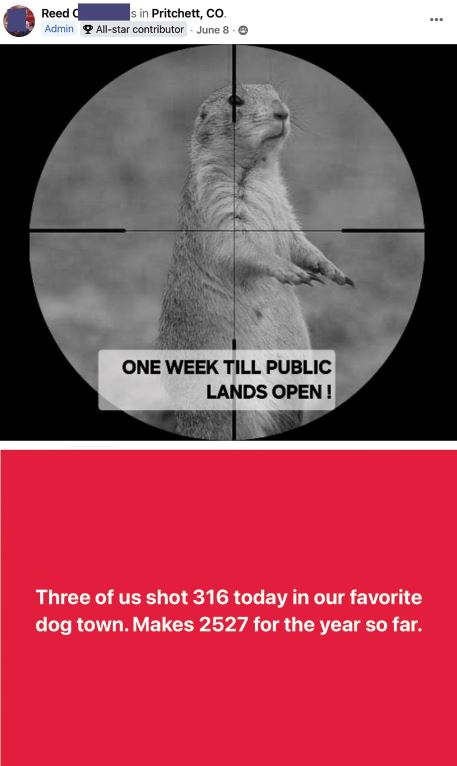
Download the full case study to see the data, maps, and policy recommendations:
Email CPW (dnr_cpwcommission@state.co.us) and urge them to limit and regulate prairie dog shooting on public lands and ban lead ammunition on public lands.